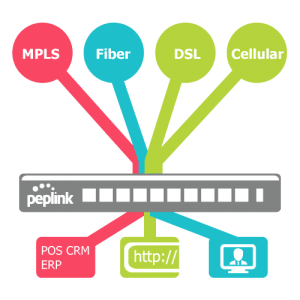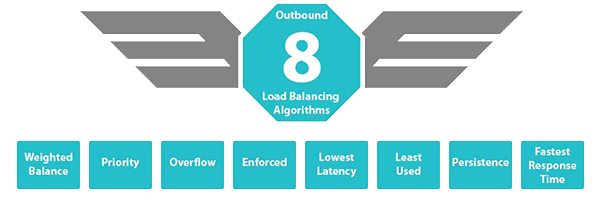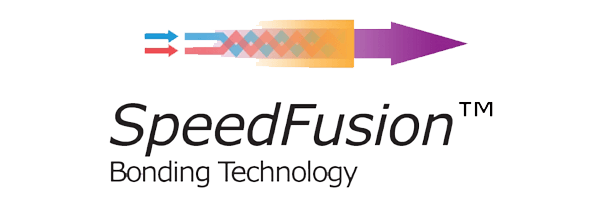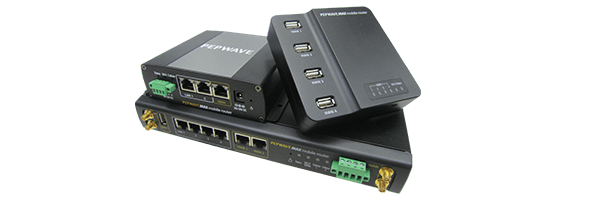Software-Defined WAN (SD-WAN)

In recent years Peplink has developed into the specialist with a head start in the field of SD-WAN technology. With their advancing products and technologies, you can build an SD-WAN network with an unbreakable connection, which is flexibly implementable and easy to use. Peplink has always focused on WAN virtualization and the intelligent use of multiple WAN connections simultaneously, to increase reliability and bandwidth and to reduce connectivity costs. Two WAN virtualisation technologies are paramount: LoadBalancing and SpeedFusion.

LoadBalancing
With the Peplink SD-WAN technology for multi-WAN load balancing you can distribute the data traffic of up to thirteen Internet connections over your connections, and lead data through eight Intelligent algorithms. This increases data speeds, reliability and flexibility and reduces your connectivity costs.

SpeedFusion
With the Peplink SpeedFusion technology you can let your company’s VPNs benefit from the bandwidth of up to 13 low-cost cable, DSL, 3G/4G LTE and other connections that are connected to your WAN. Whether you are sending files or producing real-time POS data, video images or VoIP: SpeedFusion sends all your data traffic through one budget-friendly channel, which is extremely fast and easy to configure for any network environment.

Mobile products
The Peplink SD-WAN products are not only limited to connectivity at fixed head offices and in data centres; mobile connectivity and connectivity in outdoor spaces is also provided. With the Pepwave MAX routers you can extend your WAN connection to, among other things, company cars and temporary locations without fixed lines. In addition, you can centrally monitor, manage and control all your connections and use multiple WAN connections at the same time.

FusionHub virtual application
FusionHub is the virtual SpeedFusion application from Peplink. With FusionHub you can set up SpeedFusion connections between your Cloud servers and your physical Peplink devices. FusionHub works on almost every regular virtual machine software, including Amazon Web Services, VMware, Citrix XenServer, Oracle VirtualBox and Microsoft Hyper-V.
